Womens Clothes and Accessories 1880s-1930s
Styles of dress worn on the ocean liners over five decades is gleamed from our collection of steamship lines' newspapers and magazines, fashion magazines and women's magazines.
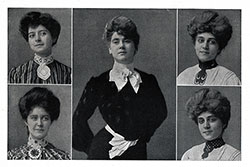
Articles carried rather than worn (such as purses), worn on a single part of the body and easily removed (scarves), worn purely for adornment (jewelry), or parts of a costume (sleves), are considered clothing accessories rather than clothing, except for shoes. Lace has its own section within Women's Clothing at GG Archives.
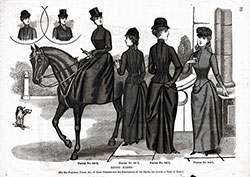
Activewear during the five decades covered by our collection has evolved from riding garments to dancing in frocks. Materials used in the creation of activewear decreased considerably during that time, making the more sporting outfits practical for their intended purpose.
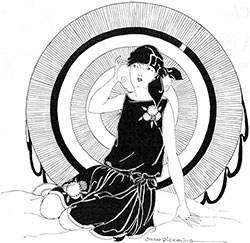
Long before the bikini, bathing suits were worn that were touted as comfortable, durable, and attractive. From the 1880s through the 1930s, bathing costumes evolved in both design and amount of material used.
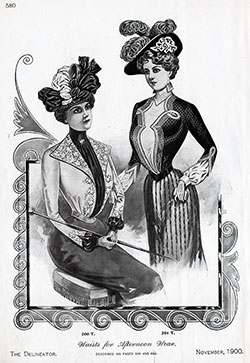
Blouses, also known as "Waists," or "Shirt-Waists," are a loose-fitting upper garment primarily worn by women and children. Traditionally, the term has been used to refer to a shirt which blouses out or has an unmistakably feminine appearance.
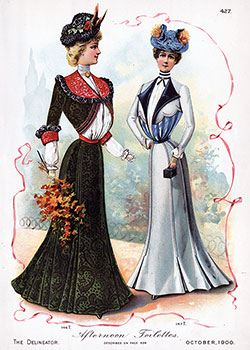
In Victorian and early 20th century fashion, the dress was constructed in two parts. The bodice was the upper part along with a skirt. This pairing had the advantage of allowing a voluminous skirt to be paired with a close-fitting bodice, and of allowing two or more bodices to be worn with the same skirt (e.g., a high-necked bodice and a low-necked bodice allowed the same skirt to serve for both daywear and evening wear).
One-piece construction became more common after 1900 due to the trend for looser, more simply-constructed clothing with narrower skirts.
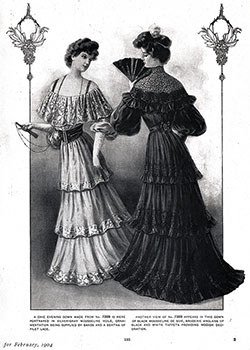
Whether it is an informal evening frock for a restaurant dinner, theater or country club... to a more formal evening gown for special occaisions, evening wear has been an important wardrobe item for women during the 1880s through 1930s.
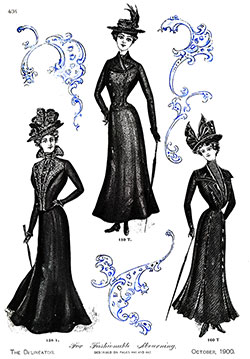
Among the well-to-do classes, of course the amount of money spent on mourning dress has not to be considered; but in any such family where there are several ladies, it is usual to find the sense of loss is almost overlooked and forgotten in questions of head-wear and trimmings.
This dress of a widow may be said to possess every bad and unhygienic quality of women’s dress (and these truly are neither few nor unimportant) intensified fourfold. It is always made both extra-long and clinging, so that exercise is even more impossible than ever.
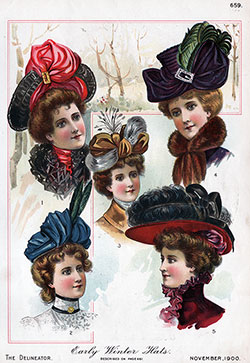
Hat fashions change so often and so radically, usually necessitating that the hair be worn differently, that any girl or woman needs the design of the newest hat best suited to her, or ideas on how she can make over last year’s hat, or how she can make her own hat.
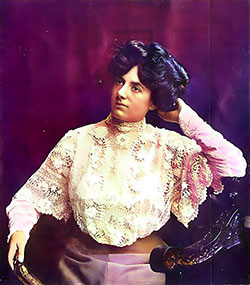
Lace enters very prominently into the composition of many of the dressier costumes. Both the heavy and the light laces are being used, but the new idea of the season is the light weight lace. All of the lighter net laces are being used. The lierre lace is especially well liked.
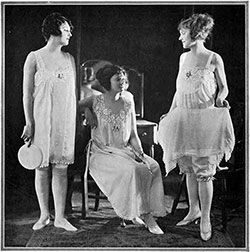
Lingerie—too long considered a staple-is purchased today more freely through its novelty appeal. Out-of-the-ordinary garments are outselling their staid sisters ten to one. In our fashion collections, lingerie includes undergarments of all types, sizes and materials.
Lingerie and Undergarments included Chemises, Bloomers, Petticoats, Brassieres, Camisoles, Bandeaux, Corsets, Girdles, and many similar items.
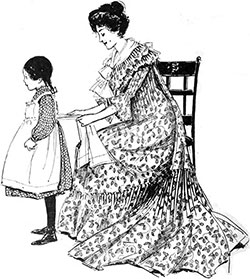
They are different dresses. There are distinctive styles, more advanced, and they conform to the actual wants of the wearers. House or porch dresses are the dresses you want because they are real values. The designs are smart— pleasing alike in their striking simplicity and the soft, graceful individuality of their lines. Roomy armholes and full, modish hips give comfort.
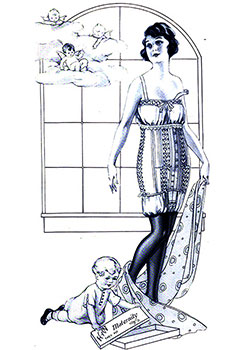
There is no longer any excuse for the woman who is expecting to be confined to be around in unsightly wrappers even when in the house. The Empire dresses are suitable models for home wear as well as for any informal receptions she may attend. For street wear a rather plain tailor suit or a dress with a separate boat are both well adapted to her use.
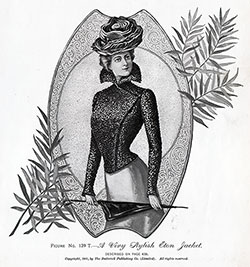
Over the years, the plaited Eton and bolero jackets have proven to be fashionable outdoor garments. For early Autumn and late Spring uses they are worn with a very thin, light lining if any at all is used. For Winter coats heavier linings are a necessity.
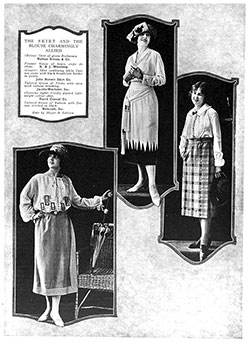
Skirts, while generally conservative, have some of the most exciting features. They range from two to four yards in width, the latter being used only in the more extreme models.
They are made in flared, pleated and gathered effects. The gathered skirt is susceptible of many variations in a trimming way and therefore is particularly interesting. Many of the skirts of this type are made with a heading, giving the shortened waistline.
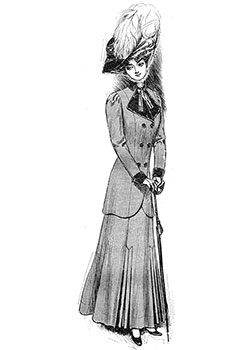
The innate longing to look one's best is, at the changes of the seasons, most satisfactorily answered by the tailored suit. With a well-cut tailored suit and a becoming hat, a woman can enjoy the supreme satisfaction of knowing that she is well dressed for any occasion.
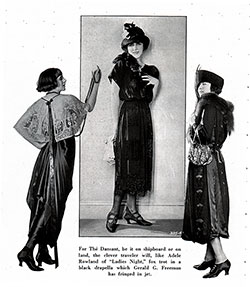
For traveling costumes short dresses are universally adopted, and skirts are often simulated by trimming, as it is a saving of trouble, material, and expense, and is decidedly more comfortable. There are attractive colorings in all materials, and the traveling dress may be both becoming and stylish.
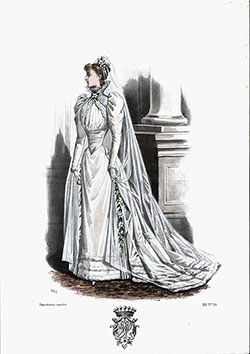
Wedding Fashions, Weddings, & Anniversaries
The ever-present wedding gown or wedding dress is a costume worn by the bride during the wedding ceremony. White wedding dresses were the most common during the 1880s through the 1930s and followed current fashions often by including decorative frills and lace.
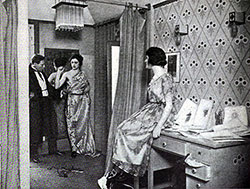
Vintage Fashion Houses & Designers
Rue de la Paix, or within a stone's throw of there, are the celebrated style creators—Beer, Cheruit, Dufuillet, Doucet, Jenny, Lanvin. Madeleine & Madeleine. Paquin, Paul Poiret, Premet. Red fern, Worth.
The Parisian style artists, when questioned about their art, are very careful to explain that they are not concerned with the styles that are popular today, but with the styles that are going to be popular tomorrow.
